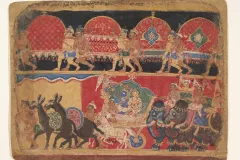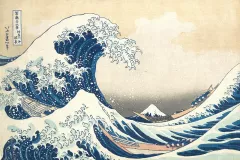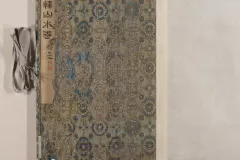You will now get to know more paintings about travelling. Several years ago Sandalsand published an article about this subject. Right here you will find even more paintings from around the world.
Like you read in the first article, the paintings about travelling included are not necessarily among the world’s greatest masterpieces, but some are. For sure, there are many more paintings about travelling than what you will find in these two articles. But we need to have a break, sometimes.
In contrast to the first article, this one distinguishes between paintings from the European and American traditions and East Asian traditions, most notably from China and Japan.
The following paintings are all published here on Sandalsand on a public domain license. Some are on Wikipedia Commons and others on The Metropolitan Museum of Art (The Met).
European and American artists
This header is true, however the settings of these paintings include places outside of this area. An additional key phrase is the Middle East. Unlike the first article, I render the pictures without comments. However, you find the title and artist in the captions below each image. Click on the images to reveal a larger version, optimised to the screen you have.
Works by Asian artists
Asia is an immense continent with a huge variety of cultures and cultural expressions. The following six images do not cover all. They are of a random character, or more precisely the result of random web searches. The images are from India, China and Japan.
Paintings on scrolls
In Chinese and Japanese art, painting and writing on long scrolls has a long history.
Scroll paintings are a type of traditional Asian art that are typically created on long, narrow sheets of paper or silk that are mounted on a scroll or roller. They are a common form of art in many parts of Asia, including China, Japan, Korea, and Vietnam, and they have a long history that stretches back many centuries.
Paintings on scrolls often depict a wide range of subjects, including landscapes, flowers and plants, animals, figures, and historical events. Some scroll paintings are narrative works, telling a story through a series of connected images, while others are more focused on a single subject or theme.
These kind of paintings often use traditional media such as ink and watercolor, and they may be embellished with gold or other decorative elements. The paintings are typically created by skilled artists who have received specialized training in traditional painting techniques, and they are highly prized for their beauty and craftsmanship.
Scroll paintings are an important part of the cultural heritage of many Asian countries, and they are often displayed in museums and galleries as well as in private collections.
Two examples
We will pay respect to this tradition by including two examples.
The first consists of eight images from the scroll called “Landscapes”. The artist is Shitao (Zhu Ruoji). It dates back to the Qing dynasty (1644–1911) and was painted in the 1690s. It consists of an album of eight leaves, with ink and colour on paper.
Having lived as an itinerant monk nearly his entire life, Shitao decided in 1696 to shed his Buddhist garb, end his peripatetic life, and build himself a home in the prosperous commercial center of Yangzhou, where he supported himself through his painting. (Source: The Met)
The next series is longer and older. The artist Liu Yu brought about a tradition which the aforementioned Shitao developed upon. Like the previous, we find this scroll at The Metropolitan Museum of Art and it carries the name of “Traveling Amid Streams and Mountains”.
Working in the cosmopolitan city of Nanjing, Liu Yu was exposed to a wide range of artistic influences. His volumetric mountain masses arrayed in sweeping patterns reflect the influence of Dong Qichang (1555–1636). (Source: The Met)
We let this collection conclude this article on more paintings about travelling. Have a look at the first.











































